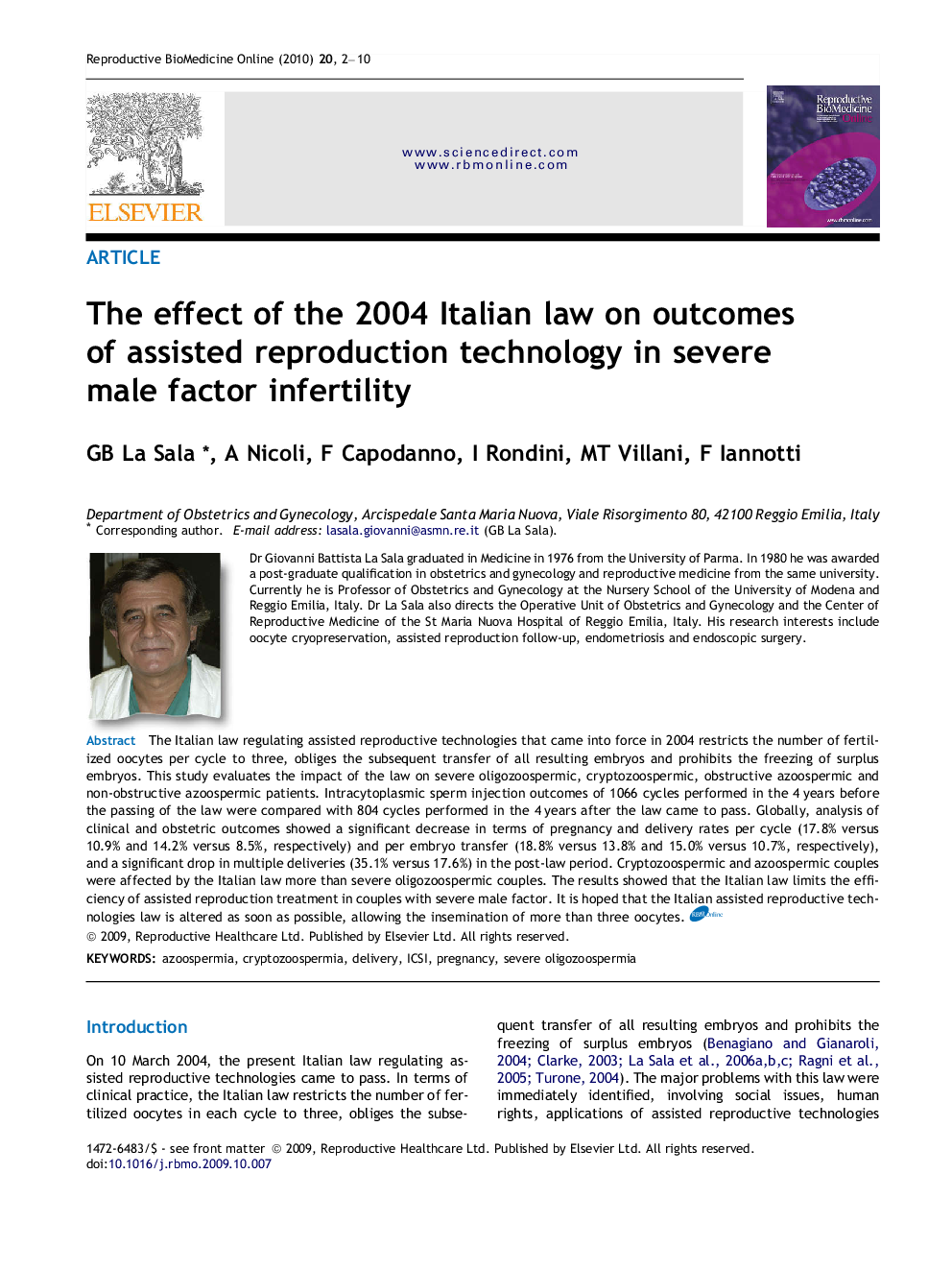| Article ID | Journal | Published Year | Pages | File Type |
|---|---|---|---|---|
| 3971903 | Reproductive BioMedicine Online | 2010 | 9 Pages |
The Italian law regulating assisted reproductive technologies that came into force in 2004 restricts the number of fertilized oocytes per cycle to three, obliges the subsequent transfer of all resulting embryos and prohibits the freezing of surplus embryos. This study evaluates the impact of the law on severe oligozoospermic, cryptozoospermic, obstructive azoospermic and non-obstructive azoospermic patients. Intracytoplasmic sperm injection outcomes of 1066 cycles performed in the 4 years before the passing of the law were compared with 804 cycles performed in the 4 years after the law came to pass. Globally, analysis of clinical and obstetric outcomes showed a significant decrease in terms of pregnancy and delivery rates per cycle (17.8% versus 10.9% and 14.2% versus 8.5%, respectively) and per embryo transfer (18.8% versus 13.8% and 15.0% versus 10.7%, respectively), and a significant drop in multiple deliveries (35.1% versus 17.6%) in the post-law period. Cryptozoospermic and azoospermic couples were affected by the Italian law more than severe oligozoospermic couples. The results showed that the Italian law limits the efficiency of assisted reproduction treatment in couples with severe male factor. It is hoped that the Italian assisted reproductive technologies law is altered as soon as possible, allowing the insemination of more than three oocytes.
